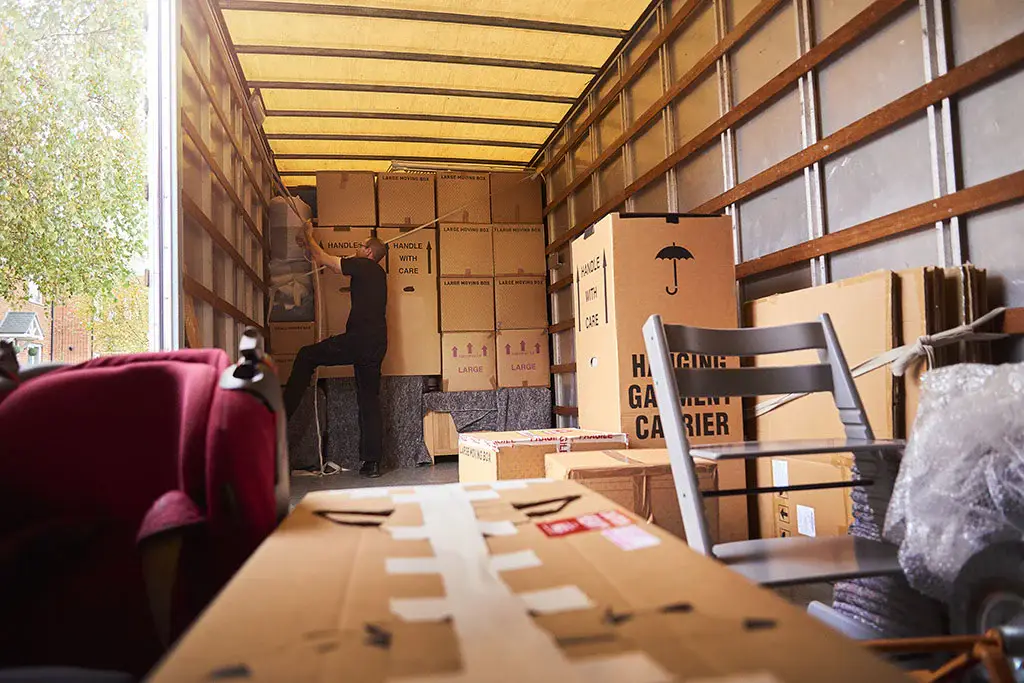How to Move a Fridge With Minimal Stress and Maximum Safety
Although moving a refrigerator can be difficult, you can guarantee a safe and damage-free transfer with the right preparation and methods. The process involves managing the fridge’s heavy weight, bulky size, and navigating tight spaces without causing damage to floors, walls, or the appliance itself. Improper handling can lead to internal issues like compressor or cooling system damage. To avoid costly repairs and ensure your fridge works efficiently in its new location, it’s important to use the right tools, secure the fridge correctly, and prepare in advance. Proper technique and preparation are key to protecting both the appliance and your home during the move. Is It Safe to Move My Fridge on My Own? Understanding Fridge Size and Weight Weight: Fridges typically weigh between 150 to 400 pounds, making them difficult to move solo. Larger models, such as side-by-side refrigerators, are particularly heavy and bulky, which adds complexity to the move. Size: The bulkier the fridge, the harder it is to navigate through tight doorways and narrow hallways. Before attempting to move your fridge, carefully evaluate its weight and size to determine whether you can handle it alone. Preparing the Pathway: Doorways, Hallways, and Obstacles Clear the Path: Ensure the route to your new fridge location is free of obstacles, including rugs, furniture, or other items that might get in the way. Measure Dimensions: Measure doorways, hallways, and corners to ensure the fridge will fit through them. If the fridge is too large, you may need to remove doors or even the fridge’s own door to make it fit. Stairs: Never attempt to move a fridge up or down stairs by yourself. If stairs are involved, it’s best to have at least one helper. Risks of Moving a Fridge on Your Own Personal Injury: Lifting a heavy fridge without assistance can lead to muscle strains, back injuries, or accidents. The risk of injury increases if the fridge is unbalanced or if you lose control while maneuvering it. Damage to the Fridge: Improper handling, such as tipping or dropping the fridge, can damage the internal components like the compressor or cooling system, resulting in costly repairs or total failure of the appliance. Property Damage: Moving a large appliance on your own puts your floors, walls, and door frames at risk. You may accidentally scrape or dent surfaces while trying to move the fridge. Essential Moving Equipment Dolly or Appliance Cart: A dolly allows you to safely roll the fridge, preventing lifting injuries. Many appliance carts are designed specifically to carry heavy items like refrigerators. Moving Straps: These straps help distribute the fridge’s weight evenly across your body, making it easier to lift and move heavy appliances. Protective Covers: Use moving blankets or other protective padding to prevent damage to your fridge and surrounding areas, such as walls and floors. When Is It Safe to Move a Fridge on Your Own? Safe to Move Alone: If the fridge is small (under 150 pounds), using a dolly or appliance cart may make it manageable by yourself. If the pathway is wide and clear, and the fridge fits easily through doorways, moving it alone may be feasible. If you’re physically fit and experienced with heavy lifting, you might feel confident moving the fridge by yourself. When to Seek Help: Heavy or Bulky Fridges: If the fridge weighs over 200 pounds or is too bulky, it’s best to get assistance to avoid injury or damage. Navigating Stairs or Tight Spaces: Always seek help when moving a fridge up/down stairs or through narrow spaces. These situations require extra hands for safety. Uncertainty: If you’re unsure whether you can safely move the fridge without risking damage or injury, hiring professional movers or enlisting help is a safer choice. By considering the size and weight of your fridge, packing services in Los Angeles, and the use of the right tools, you can decide whether to move your fridge alone or seek professional help to ensure the process is smooth and safe. 7 Essential Steps for Moving a Fridge Safely and Efficiently Moving a fridge requires careful planning and the right technique to ensure both the appliance and your home stay safe. Follow these 7 essential steps for a smooth and secure fridge relocation. 1. Preparation: Empty the Fridge Remove Food: Take out all food, beverages, and items inside to reduce weight and avoid spills. Remove Shelves & Drawers: Remove any shelves or drawers to lighten the load and prevent breakage. Wrap Accessories: If your fridge has removable parts, wrap them in bubble wrap or towels for protection during the move. 2. Unplugging and Defrosting Unplug the Fridge: Ensure the fridge is unplugged to prevent any electrical hazards during the move. Defrost (If Needed): If it has a freezer compartment, defrost it before the move to prevent leaks. Place towels on the floor to absorb any runoff water. Drain Excess Water: If there’s an ice dispenser or water tray, drain any excess water to avoid spills during transport. 3. Measure Your Fridge and Doorways Measure the Fridge: Take measurements of your fridge’s height, width, and depth, including protrusions like handles. Check Doorways and Hallways: Measure doorways, hallways, and elevator dimensions to ensure the fridge will fit. Clear the Path: Remove any obstacles along the route to make the move smoother and prevent any damage. 4. Lifting the Fridge: Use Proper Technique Get Help: For heavier fridges (over 150 pounds), enlist help to lift and move it safely. Lift with Your Legs: Bend your knees, keep your back straight, and use your legs to lift. Avoid twisting to prevent strain. Lift from the Bottom: Always lift the fridge from the bottom to keep it balanced and prevent tipping. 5. Using Moving Equipment Dolly or Appliance Cart: For heavy fridges, use a dolly or appliance cart to reduce strain. The dolly helps move the fridge smoothly across flat surfaces. Moving Straps: Use moving straps to evenly distribute the fridge’s weight, reducing strain on your body. Position the Dolly: Tilt the











